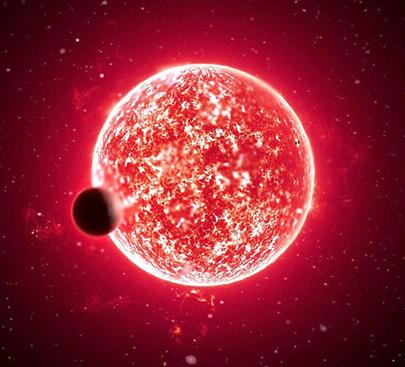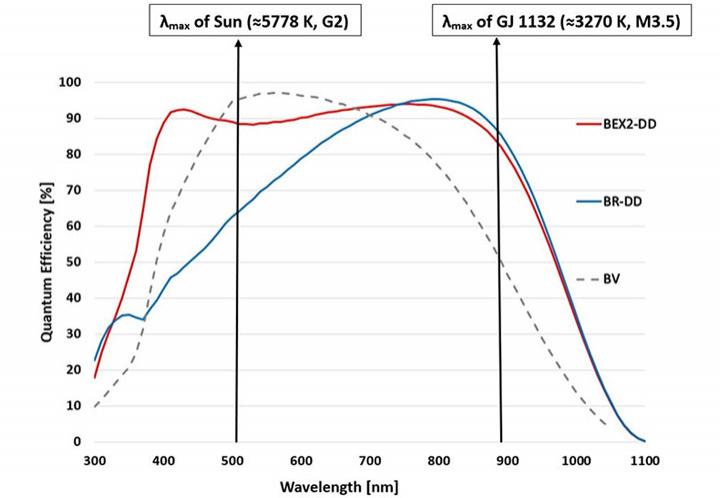Resources
 Part of the Oxford Instruments Group
Part of the Oxford Instruments Group
Expand
Collapse
The iKon ‘slow scan’ CCD camera series deliver unique thermoelectric cooling to -100°C for industry-leading low noise performance, highly efficient back-illuminated photon collection across a broad spectral range and exceptional dynamic range. The robust quality, low maintenance, hassle-free design is ideal for usage across many experimental set-ups, including at remote observatories.
Please view our selection of iKon CCD cameras below. You can use the drop-down to find a camera suitable for your application.
| Model | iKon-L 936 | iKon-M 934 |
| Sensor Format | 2048 x 2048 | 1024 x 1024 |
| Sensor Diagonal (mm) | 39 | 18.8 |
| Pixel Size (µm) | 13.5 | 13 |
| QE max (%) | 95 | 95 |
| QE Profile Options | BV, BU2, BEX2-DD, FI | BV, BU2, BEX2-DD, FI |
| Cooling (°C) | -100 | -100 |
| Darkcurrent (e-/pix/sec) | 0.000059 | 0.00012 |
| Read Noise (rms e-) | 2.9 | 2.9 |
| Pixel Well Depth (e-) | 150,000 | 130,000 |
| Digitization | 16-bit | 16-bit |
| Readout Rates (MHz) | 0.05, 1, 3, 5 | 0.05, 1, 3, 5 |
| Readout Ports | 1 | 1 |
| Fastest Full Image Readout Time (sec) | 1.05 | 0.23 |
| Timestamp | TTL | TTL |
| Interface | USB 2.0 | USB 2.0 |
| Learn More | Specifications | Specifications |
| Request Pricing | Pricing | Pricing |
iKon deep-cooled CCDs are suited primarily to ‘slow’ low-light imaging applications that typically involve long exposures (from tens of seconds to minutes or even hours) combined with a relatively slow image readout, typified by usage in astronomy or weak luminescence detection. However, a special Fast Kinetics mode can be accessed to obtain bursts of data with microsecond dynamics, ideal for quantum gas absorption experiments. A combination of low noise floor, excellent photon response over a wide optical wavelength range and superb image uniformity guides the usage of iKon CCDs.
Andor’s iKon-L back-illuminated CCD cameras have used extensively for Transit and Radial Velocimetry Exoplanet science. Large field of view enables more sky to be surveyed and low noise combined with high QE (>95% peak QE) and large pixel well depth support high precision photometry over an extensive range of magnitudes.
Furthermore, the iKon-L CCD cameras are perfectly suited for usage in remote observing sites, thanks to the UltraVac™ vacuum thermoelectric cooling technology, enabling superb sensor longevity and avoiding the need for vacuum re-pumping.
Contact our application specialists
Spectroscopic characterisation is a common methodology in astronomical observations, permitting study of the physical properties of various types of celestial objects such as stars, galaxies, planets, nebulae and planets. Spectroscopic detail can yield an abundance of useful information, including chemical composition, temperature, density, mass, distance and relative speed. Such detail can even be used to infer some understanding about that which cannot be directly detected – dark energy! Extremely high-resolution spectroscopy is also used in Radial Velocimetry as a means of exoplanet detection and characterisation.
Wide field spectroscopic surveys often involve hundreds of fibre optics at the telescope focal plane, feeding signal into an advanced high resolution spectrograph, which in turn is coupled to a large area, high resolution CCD detector. For wide field astronomical spectroscopy instruments, Andor strongly recommends the iKon-L -100 °C thermoelectrically cooled CCDs, yielding maximum SNR and high dynamic range over a wide range of exposure durations. iKon-L is available in standard silicon or deep depletion formats, the latter providing enhanced NIR performance.
Contact our application specialists
Quantum degenerate gases, such as Bose Einstein Condensates (BEC) or Degenerate Fermi Gases (DFG) , are often imaged using absorption imaging because this method provides a reliable image of the density distribution of the ultracold atom cloud and therefore can give insight into the physical properties of the cloud. The achievement of quantum degeneracy is usually varied through a measurement of the density distribution of the atom cloud either after a ballistic expansion or within the trap. Furthermore, the existence of a condensate is often determined by absorption images of the atom cloud after its release from a trap, which can require a means of fast kinetic measurement.
Andor’s iKon-M 934 back-illuminated CCD has been used extensively for absorption imaging of quantum degenerate gases. Low noise and high QE yield optimal SNR across a wide spectral range. In particular, the enhanced NIR response of deep depletion sensor types (‘BEX2-DD’) have often been used for 780nm absorption of Rubidium BECs. ‘Fast Kinetics Mode’ can be used to image the released cloud with microsecond temporal dynamics.
Contact our application specialists
All iKon models offer a complimentary combination of technologies that ensure maximum Signal to Noise ratio under very low light signal conditions.

Quantum efficiency versus wavelength of the standard Silicon (‘BV’) and deep depletion (‘BR-DD’ and ‘BEX2-DD’) iKon-L sensor options. Overlaid are the peak wavelengths λmax. of the Sun and the exoplanet-hosting M-dwarf GJ 1132. This highlights the higher quantum efficiency in the NIR of deep depletion sensors, which is of great importance for observations of cool stars, such as M-dwarfs.
The UltraVac™ permanent vacuum enclosure of iKon-L is particularly relevant to the needs of astronomers, where cameras are often in remote unmanned observing locations and need to operate without service intervention, over long durations of time. Furthermore, thermoelectric cooling down to -100 °C, even for very large area sensors, circumvents the need to utilize liquid nitrogen or unreliable compressed gas coolers in order to minimize camera darkcurrent.
